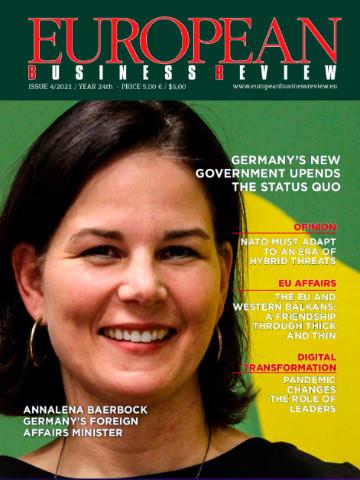by Juan Pablo Ortega*
In an era where online shopping, from electronics to clothing, is the norm, we have seen a rapid surge in digital payment solutions and e-commerce platforms. This explains the fast expansion of cross-border e-commerce, giving consumers who were limited to national options the opportunity to buy international items. Cross-border transactions entail various costs, with bank fees constituting the bulk of this. Despite the inherent expenses associated with these transactions, the demand for cross-border payments remains substantial, driving their growth. Yet, about 1.4 billion adults remain unbanked worldwide, driving the need for alternative payment methods (APMs), such as digital wallets, bank transfers and Buy Now Pay Later (BNPL).
While well-established giants, such as Amazon and Shein, enjoy robust resources and infrastructures, small and medium businesses frequently grapple with payment issues. To mitigate the risk of sales loss due to technical integration difficulties, sluggish payment processing and lack of secure payment alternatives, these merchants are in dire need of enhanced payment solutions. Moreover, their shortcomings in payment infrastructure expose them to fraud risks, requiring an average investment of 10% of their e-commerce revenues to combat payment fraud.
What’s the issue with the payment mechanisms offered by online merchants?
MRC’s 2023 Global Payments And Fraud Report reveals that numerous e-commerce platforms still adhere to manual payment review processes. These processes can lead to errors and complications, increasing the likelihood of data breaches and fraud. Merchants worldwide manually review about 19% of all e-commerce orders, with 15% of these reviews resulting in a decline. Additionally, there are issues with data transparency related to payments, chargebacks and fraud. Small businesses are doubling their estimated fraud management spending, investing 12% of e-commerce revenue.
Another challenge is the increasing need to offer multiple payment methods, which has been widely noticed in Latin America. Recent data released by the consultancy firm Americas Market Intelligence (AMI), sheds light on the growing prominence of APMs in Latin America. The study covered 15 economies in the region and revealed that APMs accounted for 39% of the total digital commerce volume in 2022. With the advent of instant payments, account-based transfers, digital wallets and the recent addition of BNPL (which witnessed a remarkable 300% growth in 2022), APMs have made significant inroads into the Latin American market.
The necessity to meet diverse customer needs has resulted in websites integrating multiple payment providers from various countries. Integrating and implementing this network of multiple payment providers, however, is challenging and time-consuming. In addition, sudden changes in payment policies of different countries can trigger the blocking of a merchant’s payment option, unforeseen fees and the need for new security configurations, creating additional challenges for merchants.
So, how can e-commerce steer towards a more efficient payment and fraud infrastructure? There are a number of ways this can be done:
A unified payment platform
A unified payment platform could rectify the fragmentation of payment data. Businesses adopting unified payment platforms have witnessed multiple benefits, including enhanced data quality, settlement currency and superior payment solutions that drive company growth and benefits.
International compliance
Merchants must align with a payment provider that simplifies compliance with global regulatory requirements. A provider that proactively addresses these changes as they arise is essential. Employing a unified payment platform is more likely to instil confidence in businesses as they navigate critical regulatory changes, unlike those burdened with a convoluted and legacy-laden provider roster.
Specific anti-fraud systems
Engaging anti-fraud systems tailored to specific business needs is a strategy to ensure the required level of security for businesses and consumers alike. Safe payment providers with sector-specific expertise can effectively counter fraud attempts targeted at specific businesses.
Payment orchestration solutions
Payment orchestration platforms provide a unified payment solution, enabling merchants to visualise end-to-end payments, identify risks and opportunities, enter new markets, integrate regional payment providers, accommodate a range of currencies and comply with relevant regulations. This solution allows online businesses to monitor their payment performance, benchmark it against other companies, identify areas for improvement and unlock potential cost savings.
APMs
Alternative payment methods, such as instant transfers and digital wallets, due to their instantaneity and, in the case of wallets, chargeback capabilities, might be an excellent solution to encourage people to buy internationally and expand the unbanked population’s scope of consumption.
Even though e-commerce has become a dominant force in the modern market, its associated payment structures are riddled with inefficiencies that negatively impact the global economy. Merchants often lack access to accurate payment data, leaving their businesses vulnerable to fraudulent activities and compelling them to allocate substantial portions of their revenue to fraud management. Moreover, the absence of clear data closes their eyes to potential expansion opportunities.
To rectify these issues, merchants can leverage unified payment platforms to centralise data and streamline the organization. It is also imperative to partner with payment providers that proactively address changes in international regulations, invest in specialised anti-fraud systems and utilise payment orchestration for a comprehensive view of the payment system.
*Chief Executive Officer, Yuno
**first published in: Weforum.org




 By: N. Peter Kramer
By: N. Peter Kramer

